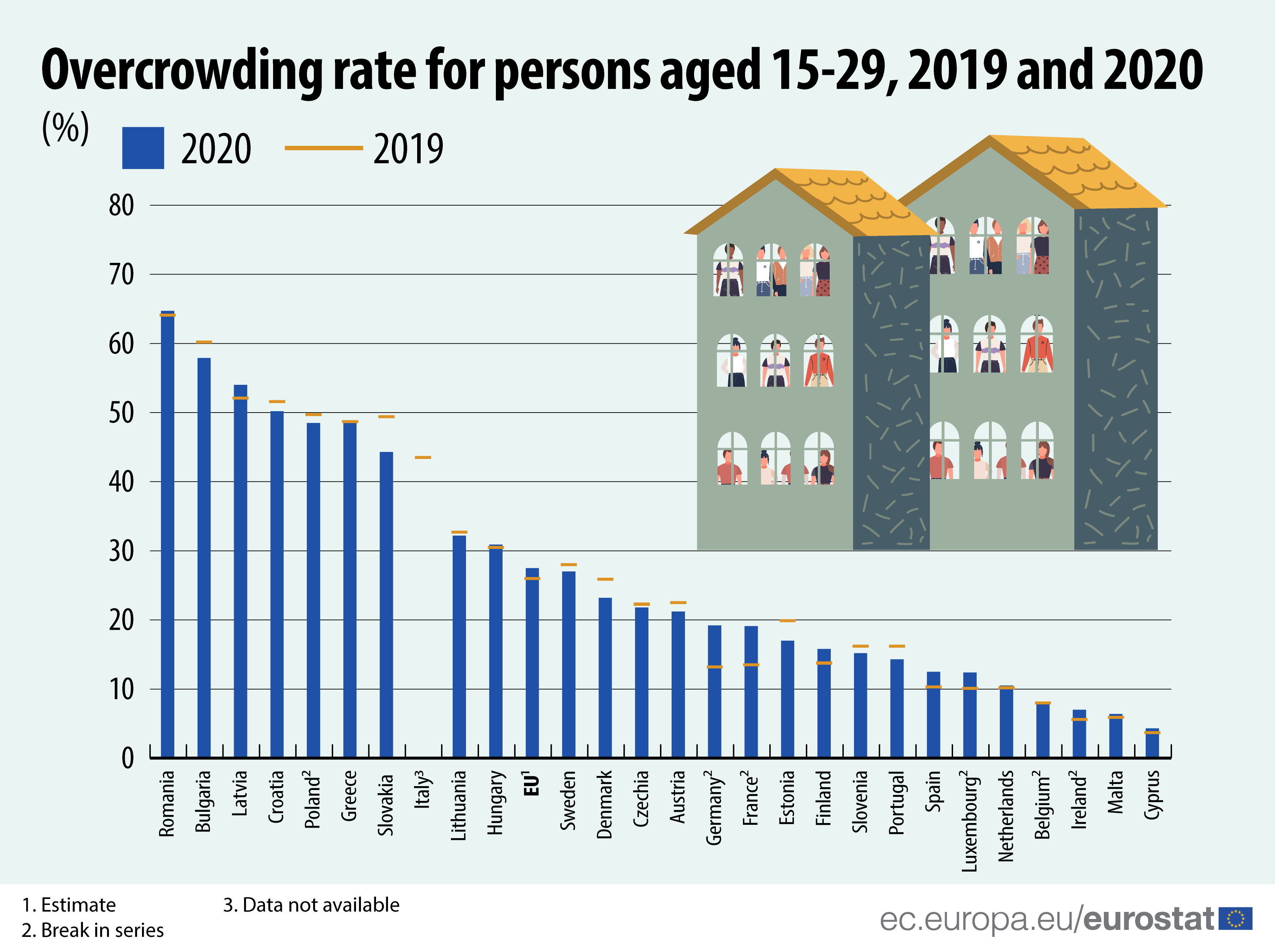In 2020, the proportion of young people in the EU aged 15-29 living in overcrowded households was estimated to be almost 28%, 1.5 percentage points (pp) higher than in 2019. Eurostat data show that this rate is almost 10 pp higher than the overcrowding rate for the population as a whole (18%).
This article presents a handful of findings from the more detailed Statistics Explained article on young people - housing conditions.
Among the EU Member States, Romania (65%), Bulgaria (58%), Latvia (54%), Croatia (50%) and Poland (49%) registered the highest overcrowding rates for people aged 15-29, while Cyprus (4%), Malta (6%), Ireland (7%), and Belgium (8%) registered the lowest rates, all below 10%.
Compared with 2019, 14 Member States with available data registered a decrease in the overcrowding rate, most notably Slovakia (-5.1 pp), Estonia (-2.9 pp) and Denmark (-2.7 pp). The opposite was recorded in the remaining Member States with Germany (+6.0 pp) and France (+5.6 pp) showing the highest increase in this indicator.
Source dataset: ilc_lvho05a
Looking at the age breakdown, the overcrowding rate was higher at the EU level among people aged 20-24, reaching 30%, followed by those aged 15-19 (29%). As people get older, the overcrowding rate decreases, being at 24% among those 25 to 29 years old.
How is the overcrowding rate defined?
The overcrowding rate is the percentage of the population living in an overcrowded household. A person is considered as living in an overcrowded household if the household does not have at its disposal a minimum number of rooms equal to the sum of:
- one room for the household;
- one room per couple in the household;
- one room per single person aged 18 and more;
- one room per pair of single people of the same gender between 12 and 17 years of age;
- one room per single person between 12 and 17 years of age and not included in the previous category;
- one room per pair of children under 12 years of age.
For more information:
- 2020 data for Italy are not available.
- Eurostat Statistics Explained article on young people – housing conditions
- Eurostat dedicated section on youth
- Eurostat dedicated section on income, social inclusion and living conditions
To contact us, please visit our User Support page.
For press queries, please contact our Media Support.


